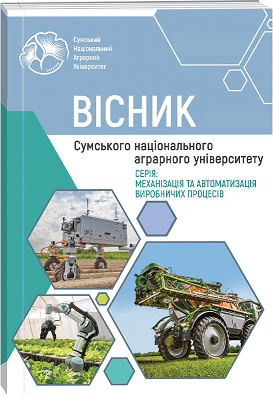TECHNOLOGY FOR THE MANUFACTURE OF LARGE-SIZED CRANKSHAFTS
Abstract
Modern heavy engineering is characterized by a significant share of small-scale and single forms of production. Machines produced for the metallurgical, energy, mining, chemical industries are characterized by high metal consumption and high labor intensity of their manufacture. For the manufacture of large-sized parts, either universal equipment and equipment are used, or technological complexes are created based on the use of unique equipment, large devices and conductors, and in some cases original tools. When assembling such units and machines, the fitting method is widely used. Due to the specific features of machining heavy and large-sized parts and the low serial production of them, during the development of the technology, it is impossible to mechanically introduce progressive methods and methods of machining, as well as the organization of work, which are widely used in large-scale and mass production of industries not related to heavy engineering. When processing these parts, there is often a need for original technical solutions. The main tasks in machining heavy and bulky parts are: achieving the required geometry of accuracy, surface roughness and physical and mechanical properties of the surface layer. Finishing and finishing operations, during which the physical and mechanical properties of the surface layer of massive parts are formed, and therefore their performance, are based on cutting materials. In the process of cutting, the surface layers have a slight strengthening, and sometimes even strengthen. In the case of this method of processing, it is impossible to adjust the surface roughness, especially the shape of micro irregularities, as well as the physical and mechanical properties of the surface layer using the cutting mode. Machining large-sized parts is very laborious, associated with a lot of time. Therefore, one of the main issues that have to be solved in heavy engineering is an increase in machining productivity as a result of the use of advanced technological solutions, a further increase in production equipment, its specialization, mechanization and partial automation, as well as the use of modern large CNC machines. The main method of manufacturing large shaft blanks in single and small-scale production is free forging. The quality of carbon and alloy steel forgings is regulated by standards. Shafts obtained by free forging have much higher strength characteristics compared to other methods of obtaining blanks. In the manufacture of large crankshaft blanks, methods of sequential stamping and bending with upsetting are widely used. In this case, ordinary hydraulic forging presses with a force of 98 MN are used. The use of these methods allows you to dramatically increase the material utilization rate, reduce the cost of machining shafts and improve the performance properties of crankshafts. The technology of crankshaft processing for large-sized machine units in mining, metallurgical, chemical, automotive, energy and other industries has specific features, which requires the use of individual technological processes, equipment and tools (Bicash Burnwal, (2023); Jean-Paul Assie, (1999)). Large crankshafts are critical parts of powerful diesel installations and various power units. They are made primarily of steel and high-strength cast iron with spherical graphite. When machining large crankshafts, the following technical conditions must be observed: the runout of the main journals relative to the axle should not exceed 0.03 mm; permissible ovality or taper of the main necks – no more than 0.02 mm, and bloodworms – 0.03 mm; skew of connecting rod necks relative to the main ones is not more than 0.02 mm; permissible deviation of the radius of the crank is not more than 0.01 mm for every 100 mm of length; permissible offset of angles between the crank elbows ± 15'; non-parallelism of bloodworm necks relative to the axis of the shaft is allowed ± 0.15 mm per 1000 mm of length; non-perpendicularity of the end of the flange to the axis of the shaft is allowed 0.01 mm for every 100 mm of length; roughness of shaft journal machining – Ra = 0.5 mm ( Pukhovsky E.S., (2021)). Technical tools are provided with high-quality processing routes, equipment, tools and equipment.
References
2. Jean-Paul Assie, (1999), Method of machining a crankshaft. United States Patent.
3. Crankshaft Processing Technology, (2019) Metal parts products manufacturing at China.
4. CNC (Hwacheon Hi-TECH 500BBL STD, (2021) URL: https://www.hwacheon-europe.com/en/Horizontal-Turning-Centers/Hi-TECH-230б
5. Mazak INTEGREX e-1850V/12, (2023) URL: https://www.mazakusa.com/machines/integrex-e-1850v-12/.
6. Mazin F., Bhaskaran G., Sabin V., (2023), Determination of cost-effective range in surface finish for single pass turning. DOI: 101504/UMR.2023.10052034
7. . Pukhovsky E.S., (2021), Progresivny protzesy obrobky materialiv [Progressive processes of processing materials]. (Electronniy resurc), K., NTUU (KPI) im. I. Sikorsky, -132 p., [in Ukraіnian]
8. Tortional vibration analysis of crankshaft in heavy duty six cylinder inline engine. (2008) Institute of automobile and industrial combustion engines. Crakow.

 ISSN
ISSN  ISSN
ISSN 



